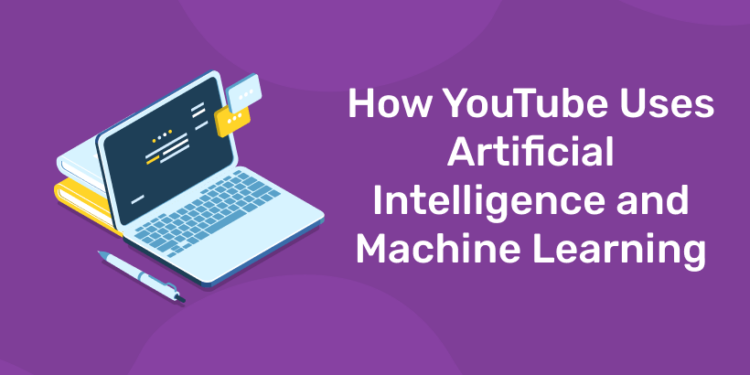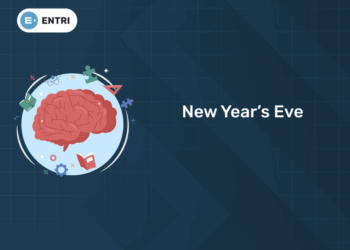YouTube is one of the most well-liked social networks and a great place to get amusement. A variety of stuff is available for watching, creating, downloading, and uploading. Almost 30 million people subscribe to YouTube Premium, and there are over 2 billion active users. When a platform offers its services in more than 100 countries, it becomes crucial to ensure that everyone may use it safely. YouTube has a lot of user-generated material and interesting activities, thus AI and machine learning become a very useful tool for the platform to smooth out its cycles and activities. The start of COVID-19 in particular has significantly increased YouTube’s reliance on AI because the platform’s workforce is required to work from home for security reasons.
Enroll for Data Science and Machine Learning Course Now!
Here’s How Artificial Intelligence (AI) and machine learning are currently used by YouTube
Automatic removal of harmful and fake content
YouTube banned 8.3 million videos in the first quarter of 2019, and 76% of those videos were automatically recognized and flagged by AI classifiers. More than 70% of them were discovered prior to any user views. Even while the algorithms are not perfect, they are sifting through content considerably faster than if humans tried to monitor the platform on their own.
The system occasionally removed newsworthy videos because it mistook them for “violent extremism.” This is only one of the reasons Google employs full-time human experts to collaborate with AI to deal with objectionable content. Here, I’ll describe how YouTube, which is owned by Google, makes use of AI.
In the first quarter of 2020, 49.9% of the YouTube videos that were taken down had no views, 29.4% had only one to ten views, and 22.7% had more than ten views. This is only feasible because to AI. The United States had 1021380 videos removed, along with 826661 videos from India, 484536 videos from Brazil, and videos from many other nations.
The protection of its users from hazardous content is YouTube’s primary responsibility. In order to achieve that, the corporation made investments in both machine learning technology and human expertise. YouTube’s capacity to swiftly recognize inappropriate content has substantially benefited from AI. Just 8% of films featuring “violent extremism” were reported and removed prior to ten views before the application of artificial intelligence; however, following machine learning, more than half of the videos removed had fewer than ten views.
The pressure from businesses, organizations, and governments, as well as the negative publicity that results when offensive videos are paired with adverts, are some of the key factors behind YouTube’s thoroughness in eliminating unacceptable content. Havas UK and other companies decided to stop spending money on advertising after advertisements began to display next to YouTube videos that supported racism and terrorism. In response, YouTube implemented cutting-edge machine learning and teamed up with outside businesses to support transparency for advertising partners. In addition to utilizing cutting-edge machine learning to better identify content that might be considered objectionable to viewers and advertisers, Google is collaborating with third-party businesses to ensure that YouTube video is safe for brands.
In the past, YouTube has come under fire for failing to take the required action to halt the trend of trash films on its site. To stop videos from appearing on the website’s home page and the app’s home screen, Google has incorporated AI (Artificial Intelligence) software, which raises concerns for the platform.
This Artificial Intelligence software is known as “trashy video classifier,” according to those involved in the study. This method is crucial for drawing and keeping website visitors on YouTube’s home page. The business hasn’t previously publicized this offensive video classifier despite it being so substantial. The AI analyses the feedback from people who report films that have an improper or misleading title, thumbnail, or other aspect.
“Up Next” Feature and New effects on Videos
If you’ve ever utilized YouTube’s “Up Next” feature, you’ve benefited from the platform’s artificial intelligence. The AI needed to run YouTube’s recommendation engine has to be different from Netflix’s or Spotify’s since YouTube’s users upload hours of video every minute, continually updating the dataset. It has to be capable of handling real-time recommendations while users are continuously adding fresh data. They came up with a two-part approach as their answer. The algorithm evaluates the user’s YouTube history in the first step, candidate creation. The second component is the scoring system, which gives each video a grade.
One of the biggest and most sophisticated recommendation systems in the market is found on YouTube. As one of the top websites in the globe, it is required to suggest pertinent videos in order to please its users. Because users upload millions of hours of video to the platform every second, YouTube differs somewhat from other services that make recommendations (like Netflix and Spotify). The content that is uploaded to YouTube’s corpus is continually changing, and they have no control over this. As a result, a strong model that can manage ongoing data inflow and generate reliable recommendations in real time is required.
The criterion utilized by YouTube’s algorithm to evaluate a good suggestion is watch time, according to Guillaume Chaslot, a former Google employee and founder of the AlgoTransparency campaign, which calls for more openness. According to him, this is advantageous for the platform and the marketers but disadvantageous for the users. This scenario might increase the popularity of videos with bizarre material because the more people who watch them, the more often they are recommended.
Uphold Age Limitations
YouTube recently announced that it would be getting a cutting-edge AI to make sure that children don’t see content intended for an older audience. Since its inception, YouTube has included kid-friendly apps for users under the age of 13, and its most popular content is equipped with age restrictions that include access to controversial material. The platform first introduced machine learning techniques for getting rid of these videos back in 2017. Currently, the platform wants to adopt a similar innovation for selecting content that is only suited for adults/mature audiences. These are the incredible ways that YouTube employs AI and machine learning to streamline its many tasks and procedures.
Conclusion
The aforementioned examples represent some of the ways that YouTube has used artificial intelligence to streamline its numerous activities and procedures. The platform’s development and the decision-making process that led to its current features were greatly influenced by artificial intelligence.
Enroll for Data Science and Machine Learning Course Now!












